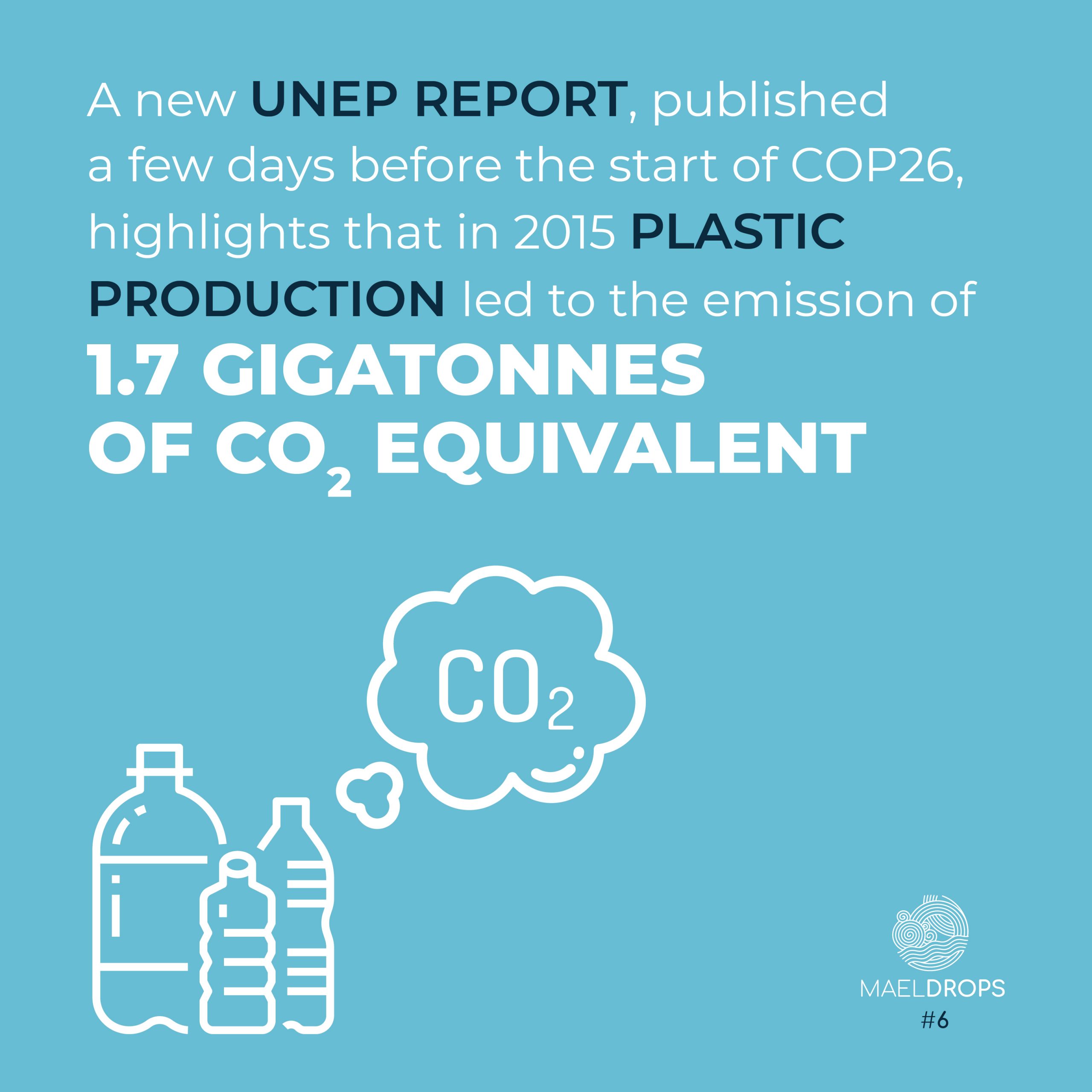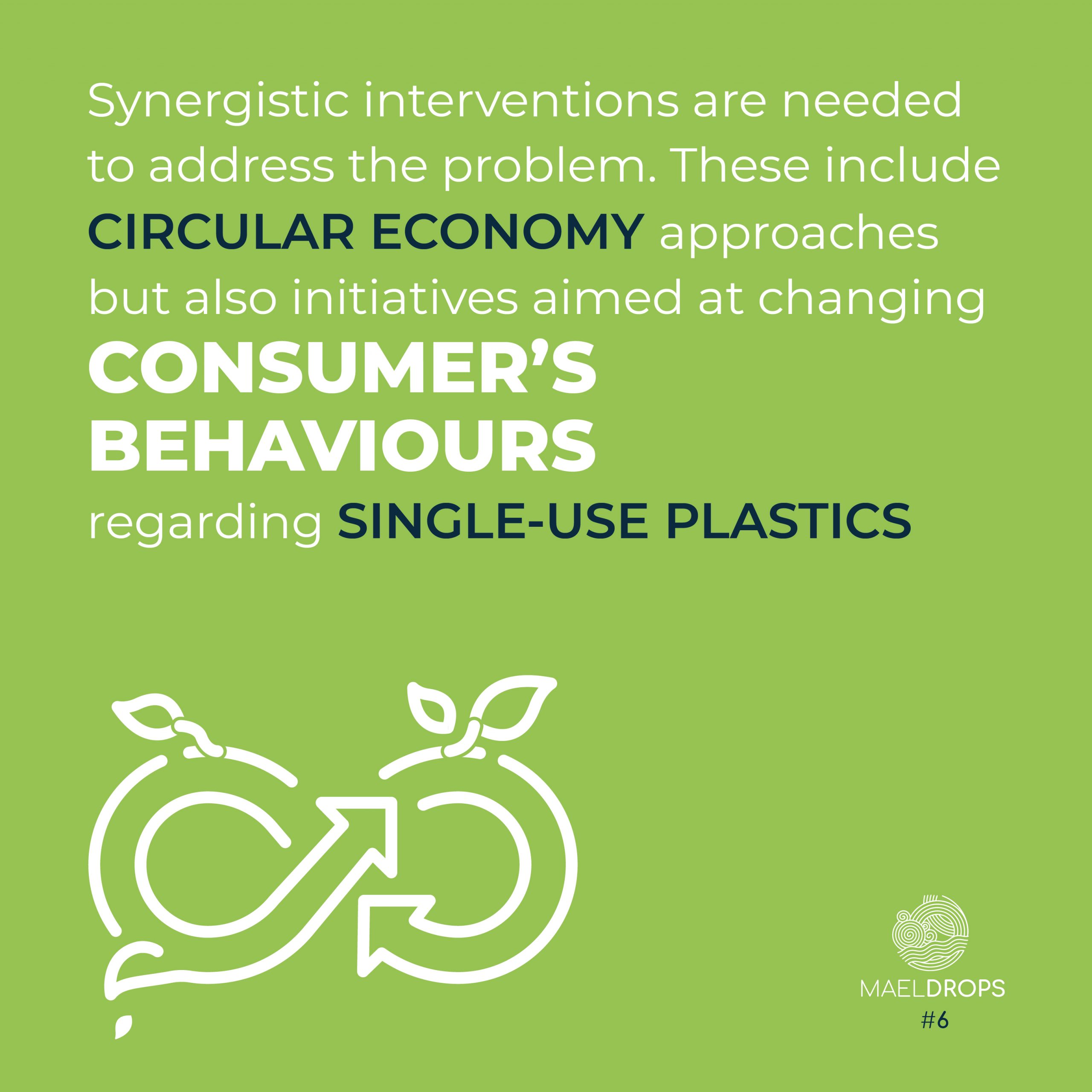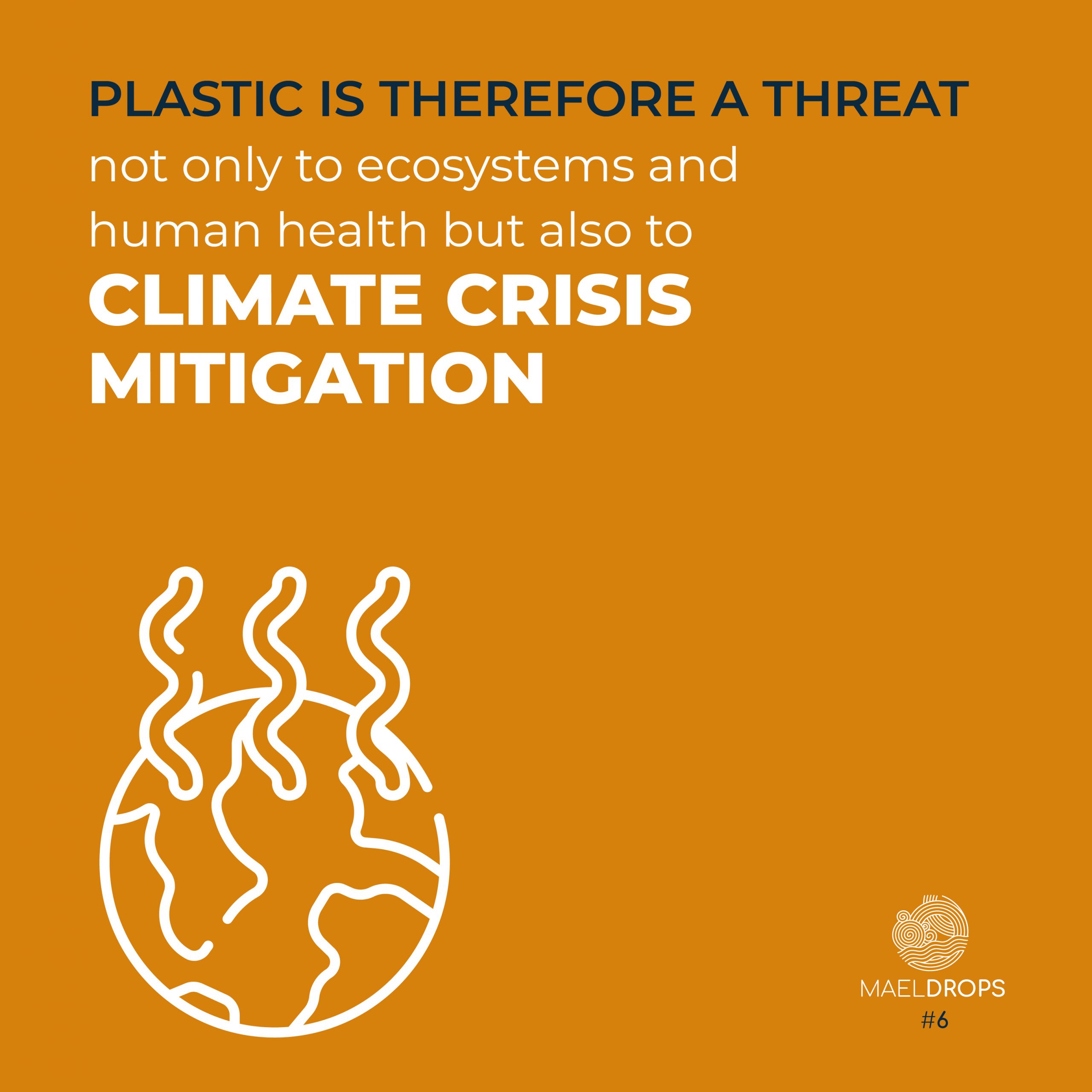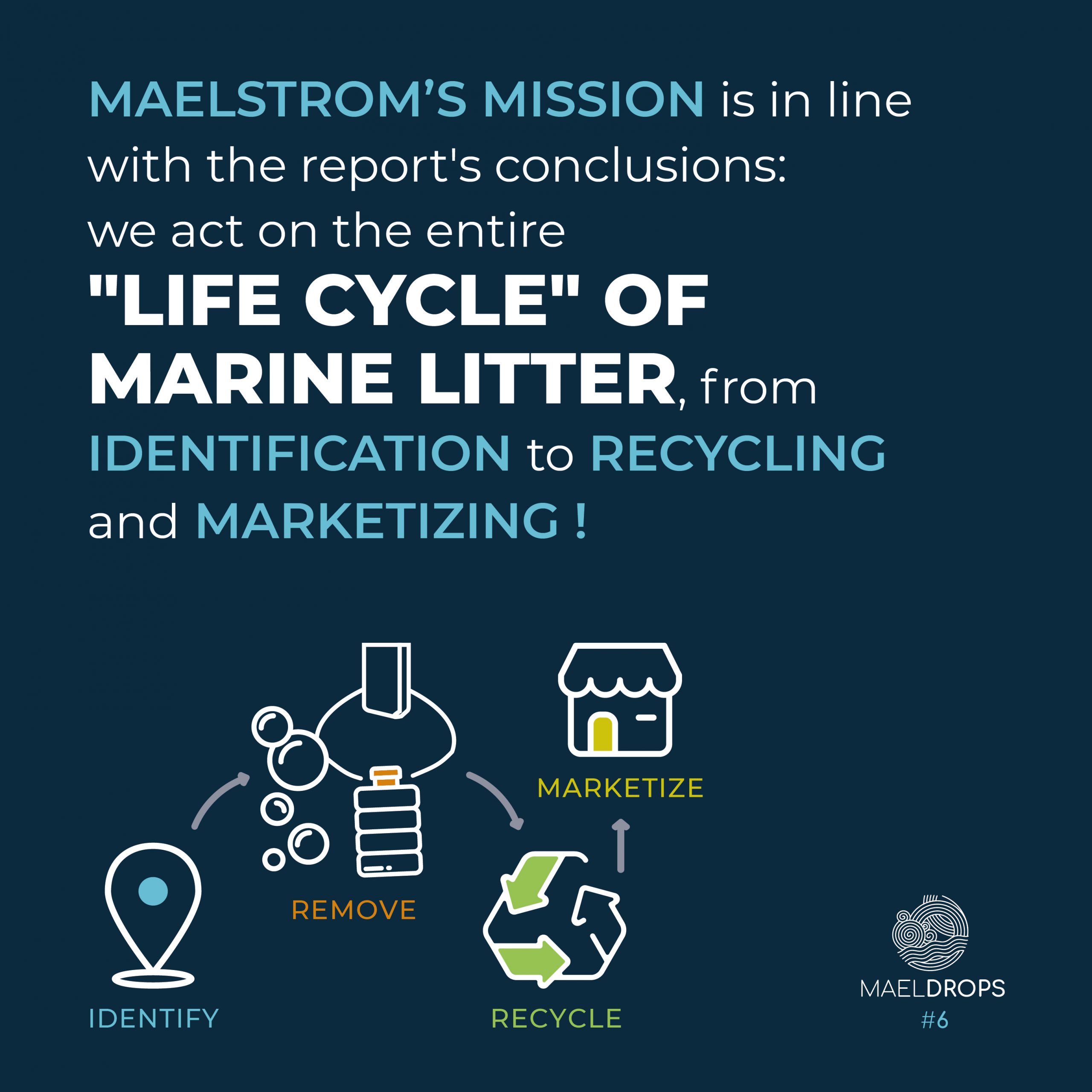MAELDrop #6 | The nexus between plastic and climate change
The United Nations conference on climate change, COP26, has just concluded, confirming the commitment to try to keep the increase in the average global temperature within 1.5 C at the end of the century. There is much to do to achieve this goal, and there are many fronts on which to act. Plastic production is among them.
In fact, as the UNEP report “From Pollution to Solution: a global assessment of marine litter and plastic pollution” published a few days before the start of COP26 highlights that plastic production led to the emission of 1.7 gigatonnes of CO2 equivalent in 2015. The authors estimate, moreover, that this figure will increase by about 6.5 times by 2050, reaching an amount that is around 15% of the global carbon budget.
In addition to the risks that plastics poses to ecosystems and to human health, which we have discussed in MAELDrop 1, we must consider that plastics also pose a threat to climate crisis mitigation.
The report also warns that, by 2040, the volume of plastic in the sea could triple. Meanwhile, recycling rates remain below 10%, and unfortunately biodegradable plastics are unlikely to be a solution to the problem. These materials have long degradation times, during which they pose risks to ecosystems as it happens with non-biodegradable plastics. For this reason, the report concludes that synergistic interventions are needed to address the problem. These include circular economy approaches, but also initiatives aimed at changing consumer’s behaviors regarding single-use plastics.
What about MAELSTROM? Our mission is perfectly in line with the report’s conclusions: in fact, we develops solutions to face the problem of the plastic already accumulated in the coastal environment acting on the entire “life cycle” of marine litter: we aim at understanding where marine litter is concentrated, identify it by type, remove it, recycle it and insert it back into the market chain. Following a circular economy approach plastics will be given a new life while avoiding the production of new plastic and in this way protecting coastal ecosystems and our climate.



